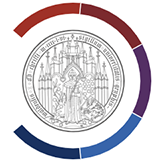Detailed introduction of the University of Greifswald:
Introduction
The University of Greifswald, whose full name is Ernst-Moritz-Arndt University of Greifswald, is the fourth oldest university in Germany and one of the earliest universities established in Northern Europe. It has a history of more than 500 years. It is located in Greifswald, Mecklenburg-Vorpommern, Germany, bordering the Baltic Sea. The university has strong strengths in biology, plasma physics, medicine, pharmacology and other disciplines.
Overview
Student size: There are currently about 12,000 students.
Number of faculty and staff: The specific number has not been clearly found, but the university is equipped with sufficient professional teachers and researchers for teaching and scientific research.
Professional courses: There are 5 faculties, offering 81 professional programs, covering language and cultural sciences, law, economic and social sciences, mathematics, natural sciences, computer science, and medical health. Including bachelor's and master's degree programs, teacher education degree programs and other national examination courses, there are also "Business Administration", "Protestant Theology" and "Church Music" , as well as some postgraduate and continuing education courses.
History
On October 17, 1456, the University of Greifswald was officially established as Academia Gryphica. Its establishment was largely attributed to the then mayor Heinrich Hubeno. It originally had four disciplines: theology, philosophy, medicine and law.
During the reform period from 1456 to 1526, 476 Scandinavians studied here, and people from 22 Nordic countries appeared among the teachers and 6 principals, which shows its close connection with Nordic countries in the early days.
After 1939, the school was named after the famous German writer, poet and politician Ernst-Moritz-Arndt.
Foundation time
1456.
School strength
Discipline and major: It has a wide range of disciplines, and its medical school is particularly strong. Its medical school is one of the oldest medical schools in Germany. In 2007, it ranked second in comprehensive strength among the 34 medical schools in Germany. It is also one of the most eager medical schools for German middle school students. In addition, the research in biology, plasma physics, pharmacology, immunology, endocrinology and other disciplines is also at a world-renowned level, and the majors of computer information, media science, art and design, law, mathematics, economics, education and other disciplines are also well developed.
Research achievements: The school has cultivated many outstanding talents in history, including three alumni who have won the Nobel Prize, such as Johannes Stark, who won the Nobel Prize in Physics in 1919, Gerhard Domagk, who won the Nobel Prize in Medicine in 1939 for discovering the antibacterial effect of sulfonamide drugs, and Michael Succow, an agricultural economist at the Max Planck Institute, who won the prize in 1997. In addition, Otto von Bismarck, the first chancellor of the German Empire, and Bernhard von Bülow, who served as the German chancellor, also studied here.
Institutional nature
German public university.
Educational philosophy
Focus on cross-disciplinary scientific research, regard science as a network, emphasize interdisciplinary professional research, ensure close guidance of students through small group teaching and enthusiastic teaching staff, and strive to provide students with good learning conditions and high-quality teaching, and cultivate students' ability to deal with complex social and environmental problems.
Key laboratories and disciplines
Key laboratories: It has two national key research centers, namely the Friedrich Löffler Institute (Federal Center for Animal Disease Research, mainly studying diseases such as avian influenza and foot-and-mouth disease) and the Max Planck Center for Quantum Physics. In addition, the school is surrounded by well-known scientific research institutions such as the Leibniz Institute for Plasma Technology and the Helmholtz Institute for Health Research. These institutions work closely with the school and provide strong support for scientific research.
Key disciplines: Medicine, biology, physics, chemistry and other disciplines have performed well in teaching and scientific research. Among them, the gene map recombination research of the medical profession is well-known in Germany and even Europe. Interdisciplinary research such as plasma physics, surface ecology, molecular biology and molecular biomedicine graduate school, medieval research center and North (Eastern) European studies are also quite distinctive.
Faculty
The school has five faculties, namely the Faculty of Theology, the Faculty of Law and Economics, the Faculty of Medicine, the Faculty of Humanities and Arts, and the Faculty of Mathematics and Natural Sciences.
Ranking
In the latest published global university millennium rankings, the University of Greifswald ranks 152nd in the world.
Expenses
All public universities in Germany have started to charge tuition since 2010, but the University of Greifswald still maintains the tradition of not charging tuition, and international students do not need to pay tuition.
Campus
Location and environment: Located in the Hanseatic city of Greifswald, about 200km north of Berlin, between the big cities of Rostock, Hamburg and Berlin, and close to the Baltic Sea, the city and the university are integrated with each other. The campus is surrounded by beautiful environment, and the natural landscape and historical buildings complement each other, such as the Baroque university main building built in 1747 and the Gothic brick church St. Nicolae Church built in the 13th century, which provide students with a good learning and living atmosphere.
Facilities: The school has modern teaching facilities and carefully restored historical buildings, providing excellent infrastructure for teaching and scientific research. The school's library has a long history and rich collection of books, which can meet the academic needs of students and teachers.
-
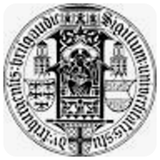
University of Freiburg
-
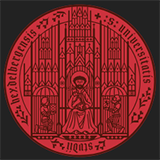
Heidelberg University
-
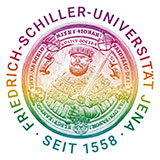
University of Jena
-
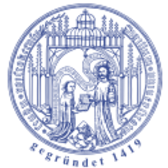
University of Rostock
-
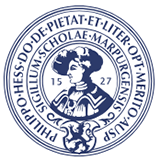
University of Marburg
-
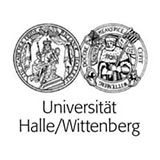
University of Halle-Wittenberg
-

University of Bayreuth
-

Leipzig University
-

University of Tübingen
-
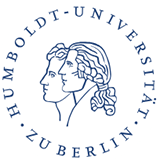
Humboldt University of Berlin
-

Mesoamerican University
-

Istmo University
-

Mariano Galvez University of Guatemala
-

Regional University of Guatemala
-

Galileo University
-

Francisco Marroquín University
-

Rafael Landívar University
-

University of the Valley of Guatemala
-

University of San Carlos of Guatemala
-

Technological Institute of Tlaxcala Plateau
-

Golfo University
-

Technological University of South Sonora
-

Technological University of Huejotzingo
-

Tizimín Institute of Technology
-

Chilpancingo Institute of Technology

